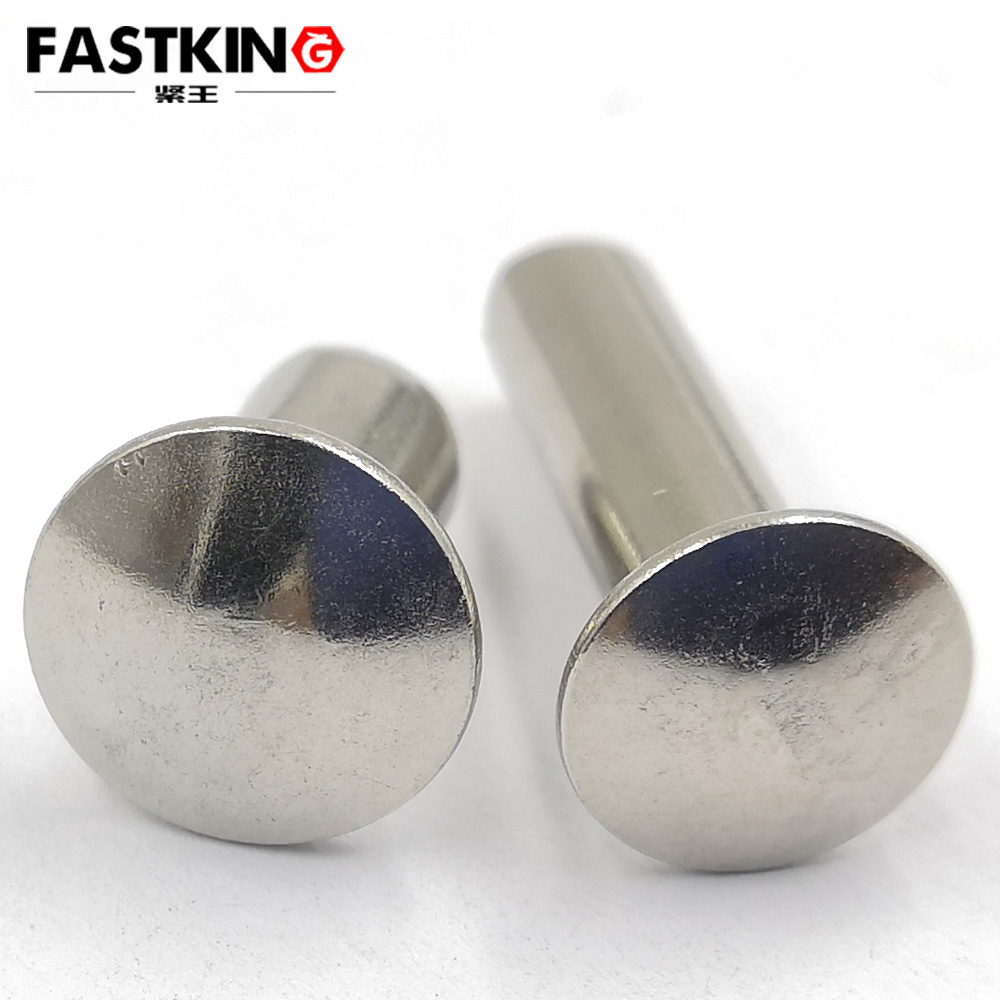Flat round head solid rivets are a common type of mechanical fastener widely used in various industrial fields. Characterized by their flat round head and solid shank, they offer high strength and reliability. This article provides a detailed introduction to the usage methods and application scenarios of flat round head solid rivets.
Structure and Characteristics of Flat Round Head Solid Rivets
1. Structure
Flat round head solid rivets mainly consist of two parts:
Head: Designed with a flat round shape, providing a larger contact area for easier application of force.
Shank: Solid structure, typically cylindrical, with a specific length and diameter.
2. Characteristics
High Strength: The solid structure provides high tensile and shear strength.
Reliability: Once riveted, they are not easily loosened, ensuring a secure connection.
Ease of Installation: Simple tools are sufficient for the riveting process.
Usage Methods of Flat Round Head Solid Rivets
1. Preparation
Selecting the Right Rivet: Choose the appropriate rivet diameter and length based on the thickness and material of the components to be joined.
Preparing Tools: Common riveting tools include rivet guns, hammers, and punches.
2. Installation Steps
Drilling: Drill holes in the workpieces to be joined, ensuring the hole diameter matches the rivet diameter.
Inserting the Rivet: Insert the rivet into the hole, ensuring the head is flush against the workpiece surface.
Riveting: Use a rivet gun or hammer to deform the rivet shank, filling the hole and creating a secure connection.
Inspection: Check the riveted joint for firmness, and perform a second riveting if necessary.
3. Precautions
Hole Diameter Matching: Incorrect hole sizes can affect the riveting quality.
Even Force Application: Apply force evenly during riveting to avoid uneven deformation.
Material Selection: Choose rivet materials suitable for the working environment, such as stainless steel or aluminum alloy.
Application Scenarios of Flat Round Head Solid Rivets
1. Automotive Manufacturing
In automotive manufacturing, flat round head solid rivets are widely used for connecting body and chassis components. Their high strength and reliability ensure vehicle safety during operation.

2. Aerospace
The aerospace industry demands extremely high strength and reliability from fasteners. Flat round head solid rivets meet these requirements and are commonly used in critical components like aircraft fuselages and engines.
3. Construction Engineering
In construction engineering, flat round head solid rivets are used for connecting large structures such as steel frameworks and bridges. Their high tensile and shear strength ensure structural stability and safety.
4. Home Appliance Manufacturing
In home appliance manufacturing, flat round head solid rivets are used to connect various metal parts, such as in washing machines and refrigerators. Their ease of installation and reliability enhance production efficiency.
5. Mechanical Equipment
In mechanical equipment manufacturing, flat round head solid rivets are used to connect various transmission parts and brackets. Their high strength and reliability ensure the proper functioning of the equipment.
Advantages and Limitations of Flat Round Head Solid Rivets
Advantages
High Strength: The solid structure provides high tensile and shear strength.
Reliability: Once riveted, they are not easily loosened, ensuring a secure connection.
Ease of Installation: Simple tools are sufficient for the riveting process.

Limitations
Non-Removable: Once riveted, they are difficult to remove, making them suitable for permanent connections.
Limited Applicability: Primarily used for metal materials, not suitable for non-metallic materials.
Conclusion
Flat round head solid rivets, as a common mechanical fastener, offer high strength, reliability, and ease of installation. They are widely used in automotive manufacturing, aerospace, construction engineering, home appliance manufacturing, and mechanical equipment. Despite their limitations of being non-removable and having limited applicability, they remain an ideal choice for scenarios requiring high strength and reliable connections.
By appropriately selecting and using flat round head solid rivets, the strength and reliability of connections can be effectively enhanced, ensuring the safe operation of equipment and structures.
